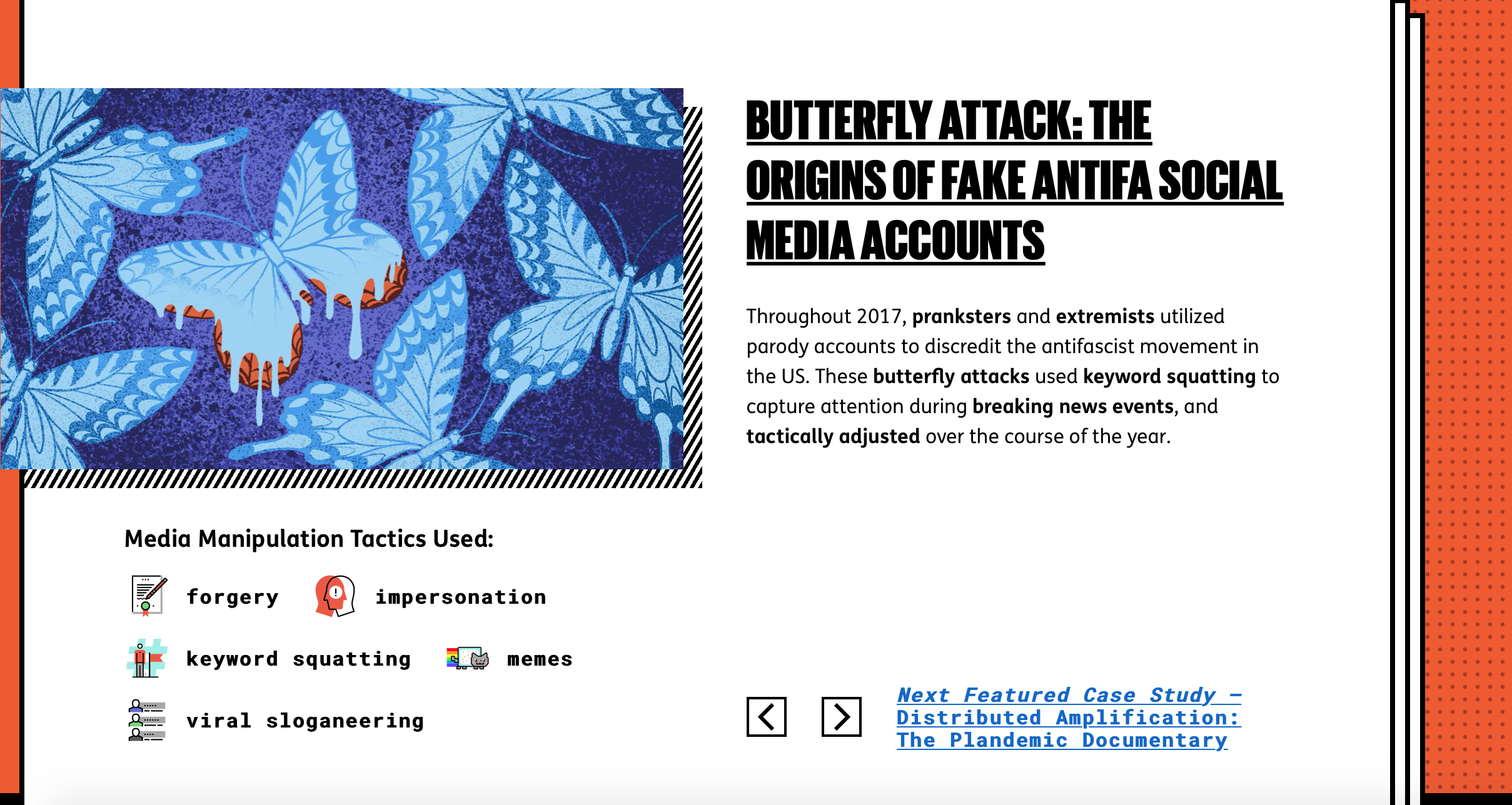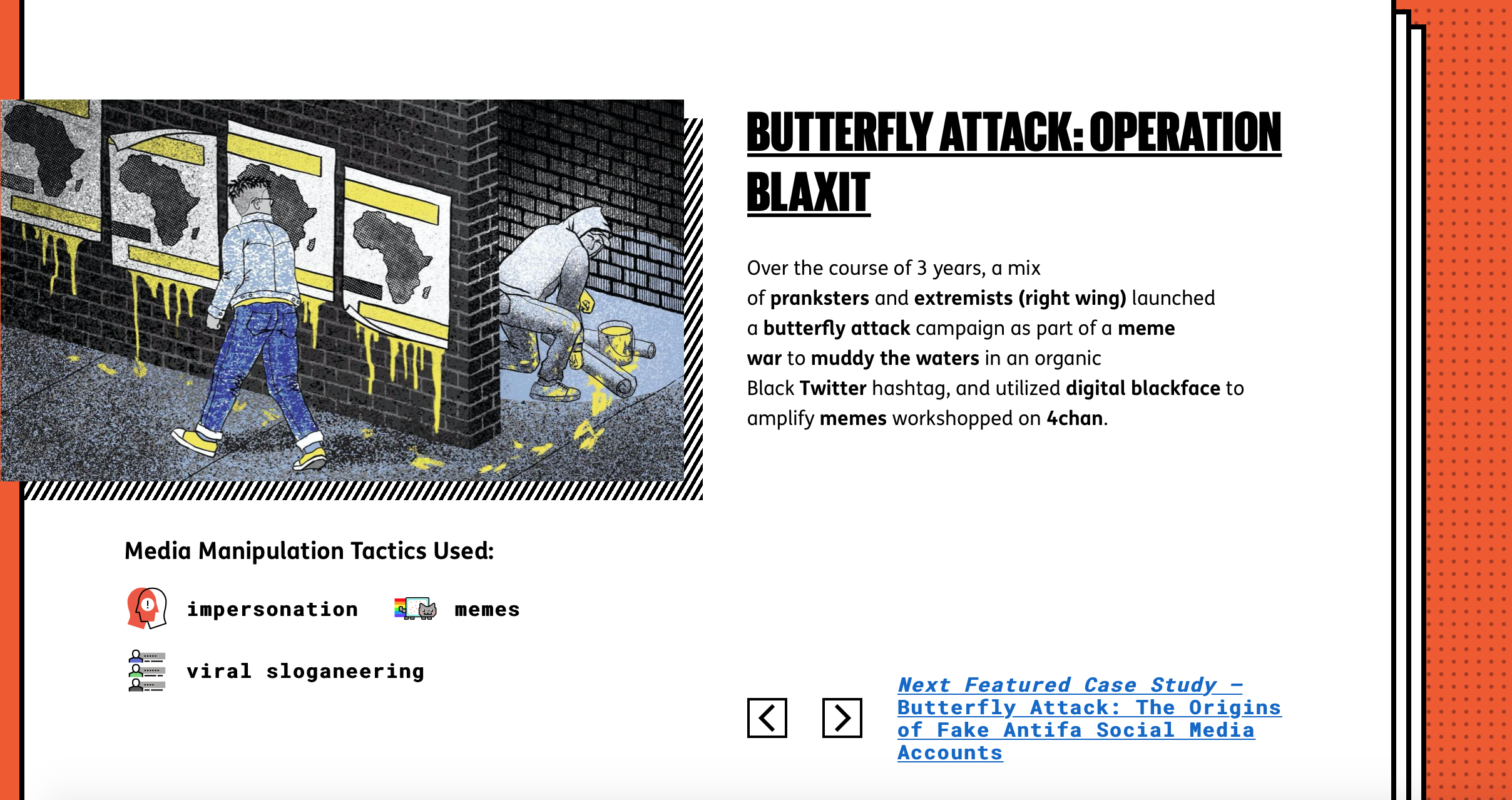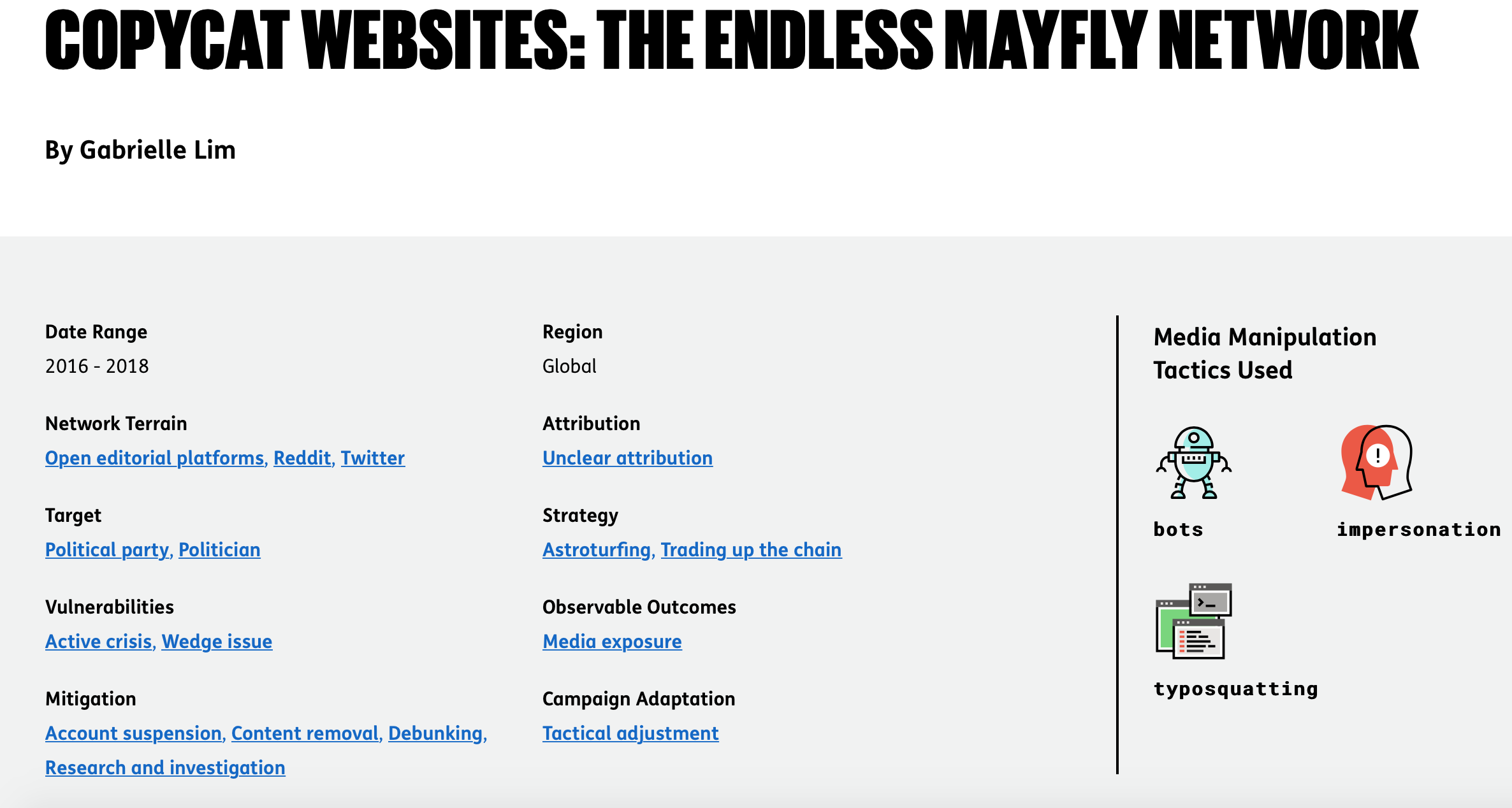Keyword squatting, butterfly attacks and sockpuppeting: the Media Manipulation Casebook sheds light on the murk of info-war
As a ‘'tips and tools” site ourself - or what is otherwise called “solutions-based journalism” - we are always interested in projects that turn a complex or challenging area for citizens into something like a well-stocked toolbox. Putting real power into the right hands, by virtue of expertly-designed methods and objects.
The Media Manipulation Casebook is a great example of this. They self-describe as “a resource intended for researchers, journalists, technologists, policymakers, educators, and civil society organizers who want to learn about detecting, documenting, describing, and debunking misinformation”. But it’s a lot less scholarly in its feel - there’s vibey graphics, and a great set of icons representing their definitions of media manipulation (see gallery).
The site rests on what it calls the Media Manipulation Life Cycle, which structures every one of their case studies:
Stage 1: Manipulation campaign planning and origins
The first stage documents the origins or planning stage of a campaign and is generally limited to conversations by a small group of operators or campaign participants, who develop narratives, images, videos, or other material to be spread online as “evidence.” In effect, it details the intended strategies, tactics, and goals of the campaign.
Stage 2: Seeding the campaign across social platforms and web
Stage 2 documents the tactics and relevant materials used to execute the campaign. In other words, this stage details the dissemination and propagation of content relevant to the operation.
Stage 3: Responses by industry, activists, politicians, and journalists
After content has been seeded, the campaign moves on to Stage 3, which documents how actors and organizations outside the campaign (ex. civil society organizations, politicians, political parties, mainstream media outlets) react. The third stage of the operation is usually a turning point indicating whether the campaign was effective in gaining attention via amplification or if it led to another observable outcome.
Stage 4: Mitigation
The fourth stage of a manipulation campaign documents actions by tech companies, government, journalists, or civil society to mitigate the spread of a campaign’s content, messaging, and effects.
Stage 5: Adjustments by manipulators to new environment
The fifth stage of a manipulation campaign involves how the operators and campaign participants adapt according to mitigation efforts described in Stage 4 and the resulting changes in the information ecosystem
The case studies are accumulating, early days yet. But the categorisations that structure them will make the Casebook an amazingly useful resource to analyze misinformation campaigns as they arise. It also strikes us that this is also a cookbook for misinformation from all actors, including progressives…
Some case studies:
Butterfly Attack: The Origins of Fake Antifa Social Media Accounts
Throughout 2017, pranksters and extremists utilized parody accounts to discredit the antifascist movement in the US. These butterfly attacks used keyword squatting to capture attention during breaking news events, and tactically adjusted over the course of the year. This case study outlines the origin of butterfly attacks that continue to the present day, with news events like #AntifaFires being a prime recent example of a disinformation campaign made possible by the media manipulation campaign outlined here.
Viral Slogan: "Jobs Not Mobs"
The viral slogan “Jobs Not Mobs” was popularized on social media and conservative press in early October 2018, before official political adoption by President Donald Trump later that month. This campaign formulated through interactions between small social media accounts and influencers with large audiences, working together to popularize a meme linking the Democratic party to violent mobs, and Republicans to job growth.
Muddy the Waters: The Forged Macron Leak
In the final days of the French presidential election in 2017, an anonymous individual instigated a campaign to discredit President Emmanuel Macron by dropping allegedly leaked emails on 4chan’s “Politically Incorrect” board, claiming they proved Macron was guilty of tax evasion. Campaign participants spread the mix of real and forged documents across the social and open web. A legal media blackout stopped French press from reporting on the documents.




